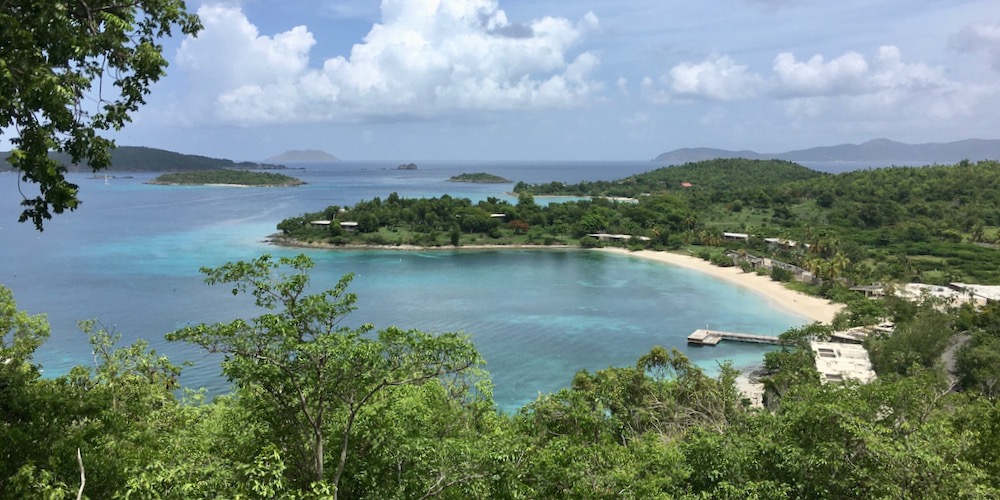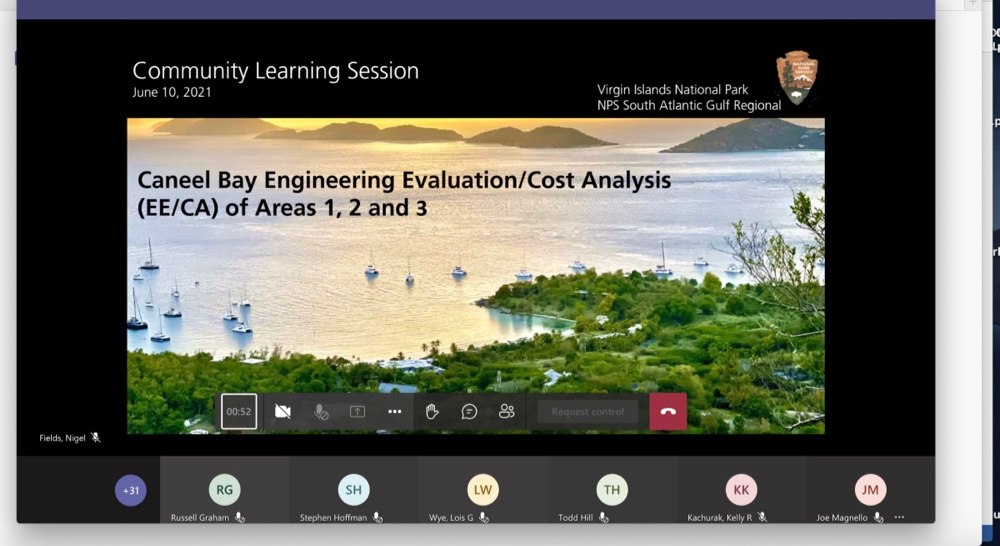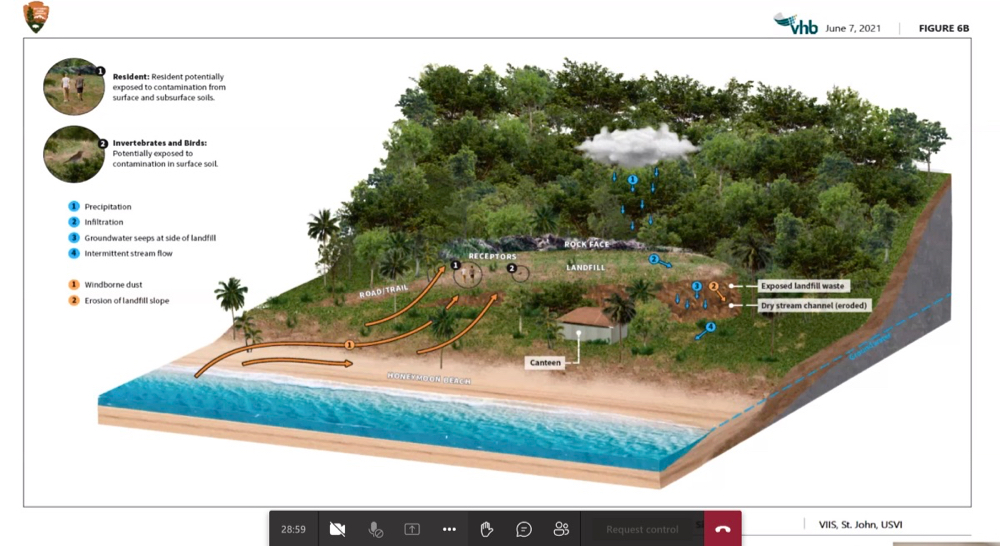
A National Park Service report presented during an online public meeting Thursday night has revealed the presence of hazardous contaminants in several locations at Caneel Bay Resort.
The draft report for public comment can be downloaded to read here: Draft Final Report for public review.
However, further studies are needed to understand the full extent of the dangers to humans, animals and plants, according to Kelly Kachurak, the U.S. Public Health officer who served as project manager for the Engineering Evaluation/Cost Analysis report.
The report is part of a series of studies that began in 2012 and will continue for an undetermined period of time. In addition to identifying further areas of investigation, scientists were unable to get samples of groundwater that might indicate the presence of contamination. Dry conditions prevailed during the two weeks in February when the most recent studies were undertaken.
Nigel Fields, superintendent of the Virgin Islands National Park, said further testing of groundwater would continue through the fall.
“We hope to wrap up fairly quickly after that,” he said.
The report estimated the cost of removing the contaminated material that has been identified so far at about $6 million.
As for who will bear the costs of the cleanup, officials declined to say whether it would be CBIA, the current leaseholder of the resort; the National Park Service, which owns the property and will have full control when the lease runs out in 2023, or another federal agency.

The Engineering Evaluation/Cost Analysis centered on three main areas of investigation:
Area 1, the wastewater treatment plant, showed limited contamination with low risk.
Area 2, the maintenance area where landscaping and fueling activities were undertaken, showed elevated levels of pesticides. Petroleum was also identified, possibly resulting from a spill documented in 2012.
Area 3, an old landfill near Honeymoon Beach, showed a mixture of hazardous and non-hazardous materials, including plastics and metals; it also showed the possibility of seeps on the south side and the possibility of erosion on the southeast side.
All three areas were tested in 2016 for metals, pesticides, volatile organic compounds, polychlorinated biphenyls, and polynuclear aromatic hydrocarbons. The results of these tests are included in the report.
In 2021, scientists also tested for petroleum, asbestos and lead. They visually identified suspected asbestos-containing materials in building materials, pipe insulation, buried pipes, and hurricane debris.
Lead paint was identified in half of the buildings from dripline soil samples.
David DiGiacomo, an attorney who in 2020 served notice to file a lawsuit against CBIA and the National Park Service to address the issue of contamination, said he still had many questions about the report.
In particular, he said that he received credible reports from former employees of Caneel Bay that barrels of DDT, a hazardous pesticide, were buried near the catchment area, but that the inspectors did not thoroughly investigate this claim.

“If there’s DDT, the byproducts can last a long period of time and have long-term consequences. The catchment area drains into Hawksnest Bay. Have we all been bathing in that?” he asked.
Kachurak said the scientists conducted a visual inspection of the area and saw no evidence of barrels, but did find the presence of a buried object two feet underground.
This buried object was one of several concerns that would require follow-up studies, she said.
Other gaps in the sampling that require further investigation include groundwater monitoring; sampling of suspected asbestos materials; additional lead-based paint sampling; determining if an underground storage tank at Cottage 7 was removed; verification of arsenic background levels; testing levels in potential fill sources; and determining the extent of petroleum in soil in the maintenance area.
Kachurak said there will be an additional contract to follow up on these issues, and the findings will be documented in an addendum to the report. Once the data is collected and analyzed, another comment period on the addendum will be announced.
For now, the public has 30 days – until July 9 – to comment on the report issued June 8. The period can be extended by another two weeks upon request.
To comment, click this link to access the site for the Planning, Environment and Public Comment initiative, also known as the PEPC.
Copies are also on file at the Virgin Islands National Park Visitors Center in Cruz Bay, which is open Monday through Friday from 9 a.m. to 3 p.m.
DiGiacomo said he was concerned that proper monitoring of archaeological resources be implemented once the removal of contaminated materials begins. Several areas of the property that may be excavated could contain burial sites of Taino people or enslaved Africans.
Towards the end of the meeting, a man who identified himself as a long-time guest at Caneel Bay Resort asked a key question, “When am I going to be able to come back and enjoy the resort?”
No one had an answer for him.





